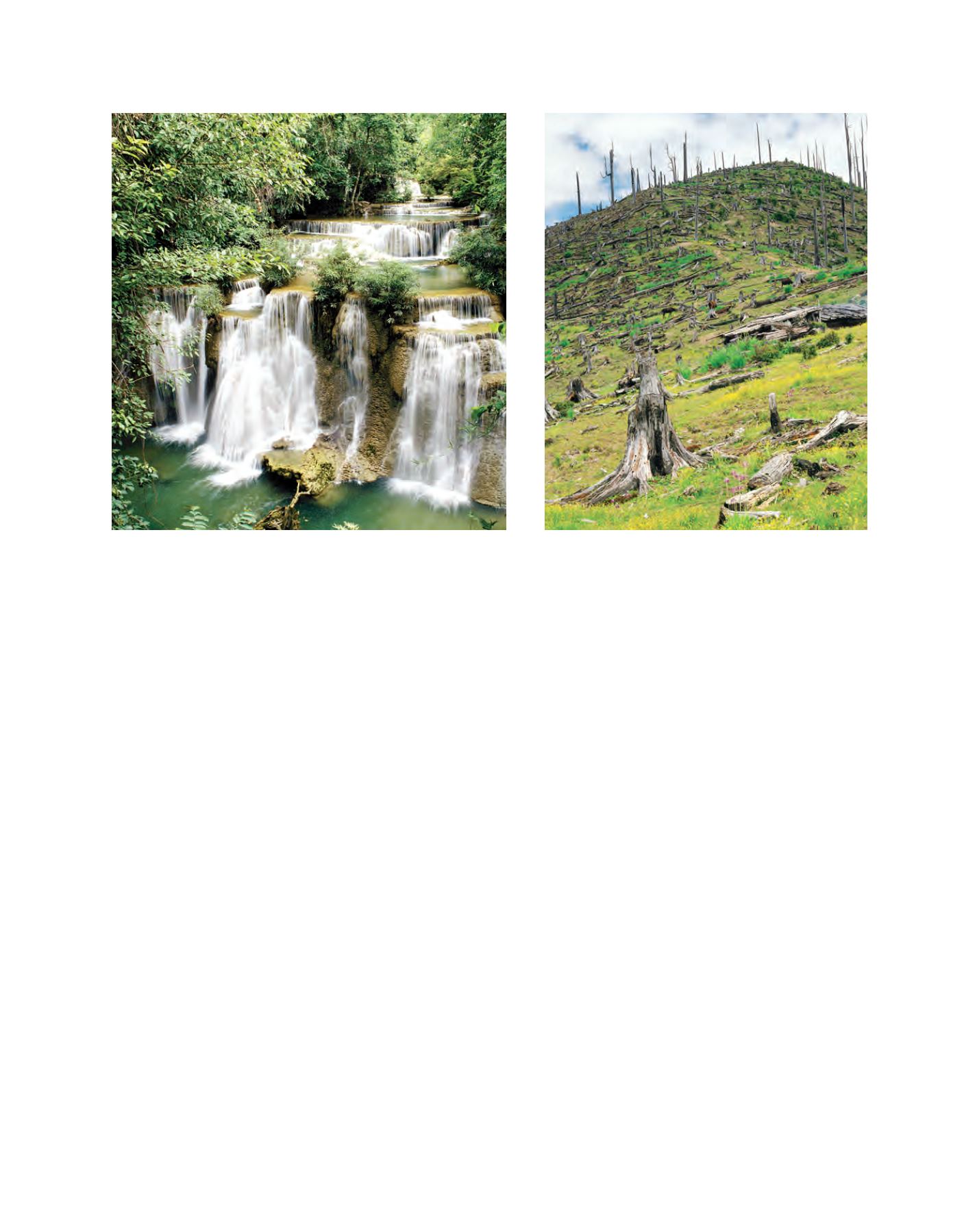

[
] 243
and should negotiate an agreement to share resulting
benefits (known as mutually agreed terms or MAT).
In many cases, users of genetic resources consult
indigenous and local communities on their traditional
knowledge of biodiversity for leads in identifying
useful properties of these resources. Such information
can enable industries to develop new products for the
benefit of humankind and have helped scientists better
understand biodiversity. Whenever traditional knowl-
edge associated with genetic resources is used, the prior
informed consent of the indigenous and local communi-
ties concerned must be obtained and mutually agreed
terms for the sharing of benefits with these communities
must be established. Benefits to be shared may be mone-
tary, such as royalties and profits, or non-monetary, such
as technology transfer, research results and training.
Forests harbour a diverse pool of genetic resources and
the use of these resources may in future be greatly affected
by the new protocol. Examples of successful access
and benefit-sharing in forests often lie in the realm of
non-timber forest products. For instance, the bark and
stemwood of the mamala tree (
Homalanthus nutans
) in
Samoa contain a gene that naturally produces Prostratin,
an active compound containing anti-viral properties. For
many years, traditional Samoan healers made tea with this
tree and used it to cure people with hepatitis. An ethno-
botanist from the University of California at Berkeley
studying traditional Samoan medicine sent some samples
of the tree to be tested against HIV. When the research-
ers isolated Prostratin in the laboratory, they discovered
that it stopped cells from being infected by the virus and
it forced the virus outside the body’s immune cells and
• Conserve at least 17 per cent of terrestrial and inland water and
10 per cent of coastal and marine areas (Target 11)
• Enhance the resilience of and the contribution of biodiversity to
carbon stocks through conservation and restoration, including
restoration of at least 15 per cent of degraded ecosystems,
thereby contributing to climate change mitigation and
adaptation and to combating desertification (Target 15).
Other targets, which are also relevant to forests, aim to eliminate
negative incentives harmful to biodiversity and apply positive
incentives for conservation and sustainable use (Target 3) and to
restore and safeguard ecosystems that provide essential services
and contribute to health, livelihoods and well-being, in particular
of women, indigenous and local communities, and the poor and
vulnerable (Target 14).
The Nagoya Protocol on Access and Benefit-Sharing
Next to the Strategic Plan, the Nagoya Protocol on Access and
Benefit-Sharing is one of the most important outcomes of the Nagoya
COP. The aim of this new protocol is to provide a transparent legal
framework for the effective implementation of the third objective of
the CBD: the fair and equitable sharing of benefits arising out of the
utilization of genetic resources.
Genetic resources are of interest in scientific research and in the
development of commercial products in a variety of sectors, includ-
ing pharmaceutical, biotechnology, cosmetic and seed and crop
industries. At its most basic, the Nagoya Protocol regulates the rela-
tionship between users and providers of these resources, including
those from forests. The Protocol regulates access to resources in
exchange for a fair and equitable share of the benefits derived from
their utilization. Users seeking access should get permission from
the provider country (known as prior informed consent or PIC)
Rainforest waterfall in Thailand
Deforestation in Yunnan Province, China
Image: Varaporn/UNEP
Image: Z.Yi/UNEP
















